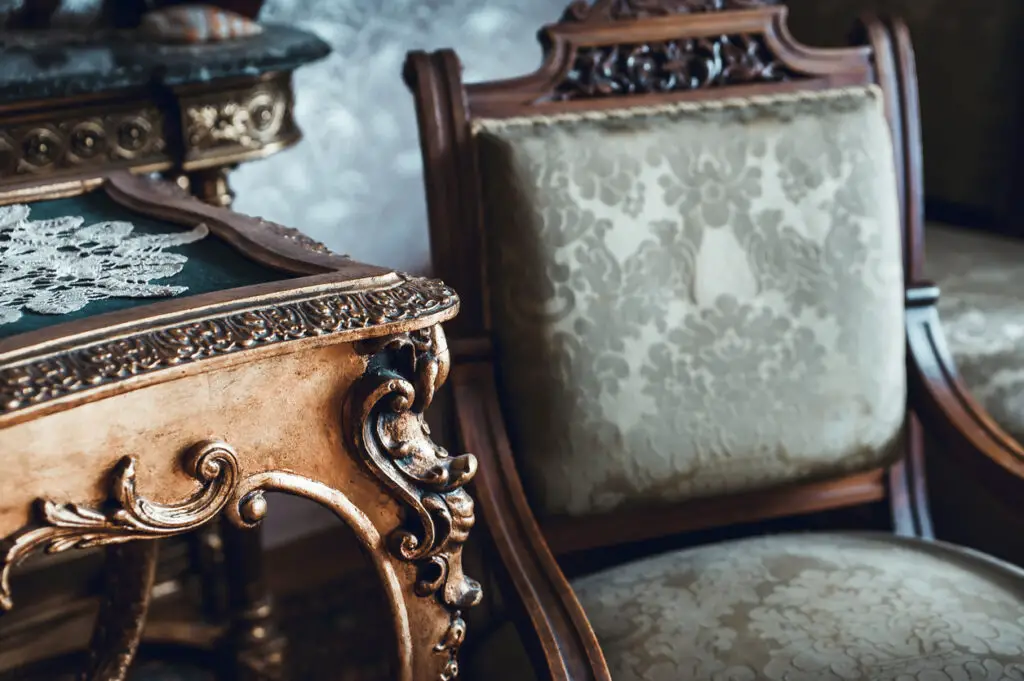1. Ammonia-Based Glass Cleaners

Back in the ’70s and ’80s, ammonia-based glass cleaners were all the rage. These products promised to give windows a streak-free shine, but they came with a catch—they could also strip paint off your walls if you weren’t careful. The powerful chemical mix was great for cleaning glass, but on painted surfaces, it acted like a solvent, breaking down the top layers of paint. If you accidentally spilled some on your wall while cleaning a mirror or window, you might have noticed a spot where the paint had started to peel away.
The intense smell was another factor that made these cleaners unforgettable. Many households would open windows to air out the ammonia fumes after use, but not everyone realized how easily it could damage other surfaces. People often used ammonia-based products for deep cleaning around the house, not realizing that a single mistake could leave your walls looking worse for wear.
2. Methylated Spirits

Methylated spirits, also known as rubbing alcohol, was a go-to for cleaning tough stains in the past, but it had a dark side when used near paint. While it was a great solvent for cleaning paintbrushes, it could easily take off the paint on your walls if used carelessly. People often mixed it with water to clean larger areas, not realizing how quickly the liquid could start dissolving layers of paint, especially if left on too long.
In many homes, methylated spirits were kept as a multipurpose cleaner and used on everything from greasy kitchen surfaces to sticky spots on walls. However, with the right combination of surface and exposure time, this strong solvent would peel off the color you were hoping to preserve. Over time, people became more cautious with it, but it still holds a reputation as a powerful, albeit dangerous, cleaner for painted surfaces.
3. Industrial-Grade Degreasers

These heavy-duty degreasers were essential in garages and workshops where stubborn grease needed to be removed from machinery and tools. However, these industrial-strength cleaners weren’t just tough on grease—they were also tough on your home’s paint. Designed to strip away oils and grime, they could leave a bare, unpainted spot on your walls if you accidentally used them in the wrong area.
While these degreasers excelled in workshop environments, they were never meant for home use, especially on delicate surfaces like painted walls. A quick spritz on the wrong surface, and you’d find your once-pristine paint job peeling away before your eyes. As a result, many people stopped using them for household cleaning, opting for gentler products instead.
4. Chlorine Bleach

Chlorine bleach is a staple in many cleaning supplies, but it has a bad reputation when it comes to painted surfaces. In the past, bleach was often used to remove mildew, mold, or stains from walls, particularly in bathrooms. The problem? Its harshness. When applied directly to paint, bleach would not only cause discoloration, but it could also begin to strip off the paint in patches, leaving walls with unsightly, uneven areas.
Though bleach is effective at disinfecting and whitening, its strong chemicals can break down the binder in paint, which leads to peeling and fading. Many homeowners learned the hard way that bleach, especially the strong industrial versions, should be handled with extreme caution near painted surfaces. People started relying on diluted solutions or other more wall-friendly cleaning methods after realizing just how quickly bleach could wreck their paint.
5. Oven Cleaners

Oven cleaners were once seen as the ultimate solution for greasy kitchen messes, but they also came with an alarming side effect—damage to paint. These cleaners contain powerful caustic chemicals that break down grime and grease at high temperatures. However, they don’t discriminate between grease and the paint on your walls, often eating through painted surfaces if sprayed nearby.
Although oven cleaners were marketed for tough kitchen tasks, many homeowners used them to clean other areas as well, not realizing the potential damage they could cause. If the spray hit your painted walls while cleaning countertops or nearby appliances, you might find your paint flaking off. Eventually, people began to realize that oven cleaners weren’t just for ovens, but they needed to be handled with care to avoid paint damage.
6. Heavy-Duty Carpet Cleaners

Carpet cleaners with powerful solvents were sold as a solution for stubborn stains, but they weren’t always so forgiving when it came to other surfaces. These cleaners were typically applied to carpets, but people often used them to tackle wall stains as well. The strong chemicals in these cleaners could quickly dissolve not only dirt and stains but also the paint on your walls, especially if the cleaner was too strong or used incorrectly.
Over time, it became clear that these products were better suited for flooring rather than painted walls. Though some carpet cleaners were marketed as multi-surface, homeowners learned that the harsh chemicals used for cleaning fibers could easily strip paint off of delicate surfaces like drywall. These days, it’s rare to see carpet cleaners recommended for anything other than rugs and upholstery.
7. Liquid Furniture Polish

Liquid furniture polish was once a household staple, known for its ability to give furniture a glossy finish. Unfortunately, its main ingredient—solvents—could also wreak havoc on your walls. While it was great for dusting wooden surfaces, it was too harsh for the painted walls in many homes. A spill or overzealous application could leave a patch of peeling paint behind.
At the time, people didn’t realize that the solvent-heavy formula could strip paint away, leaving noticeable marks. Eventually, liquid furniture polish was relegated to wood surfaces only, but in its heyday, it was used far more liberally. While it worked wonders on furniture, it left a trail of paint destruction in its wake on painted walls.
